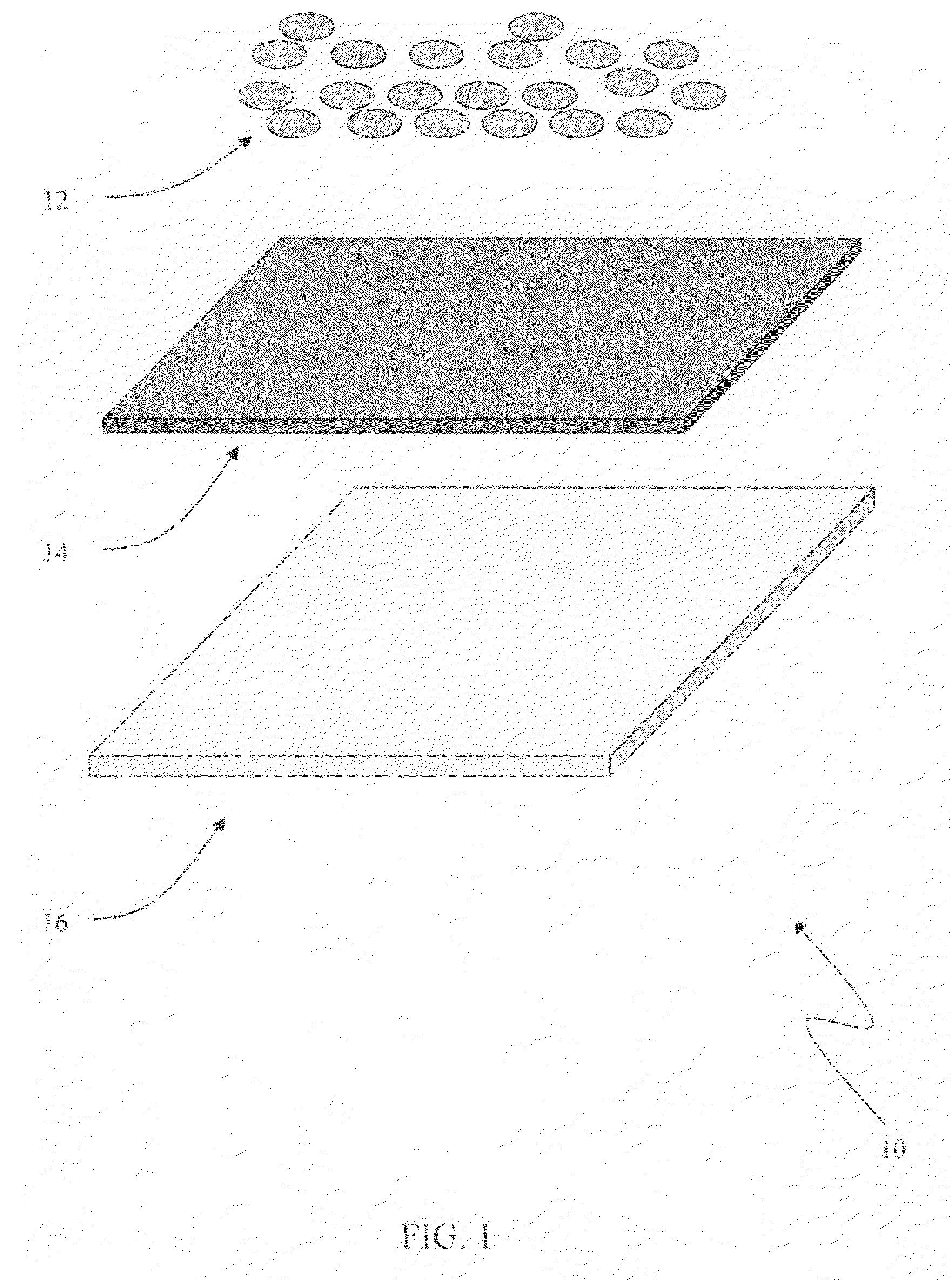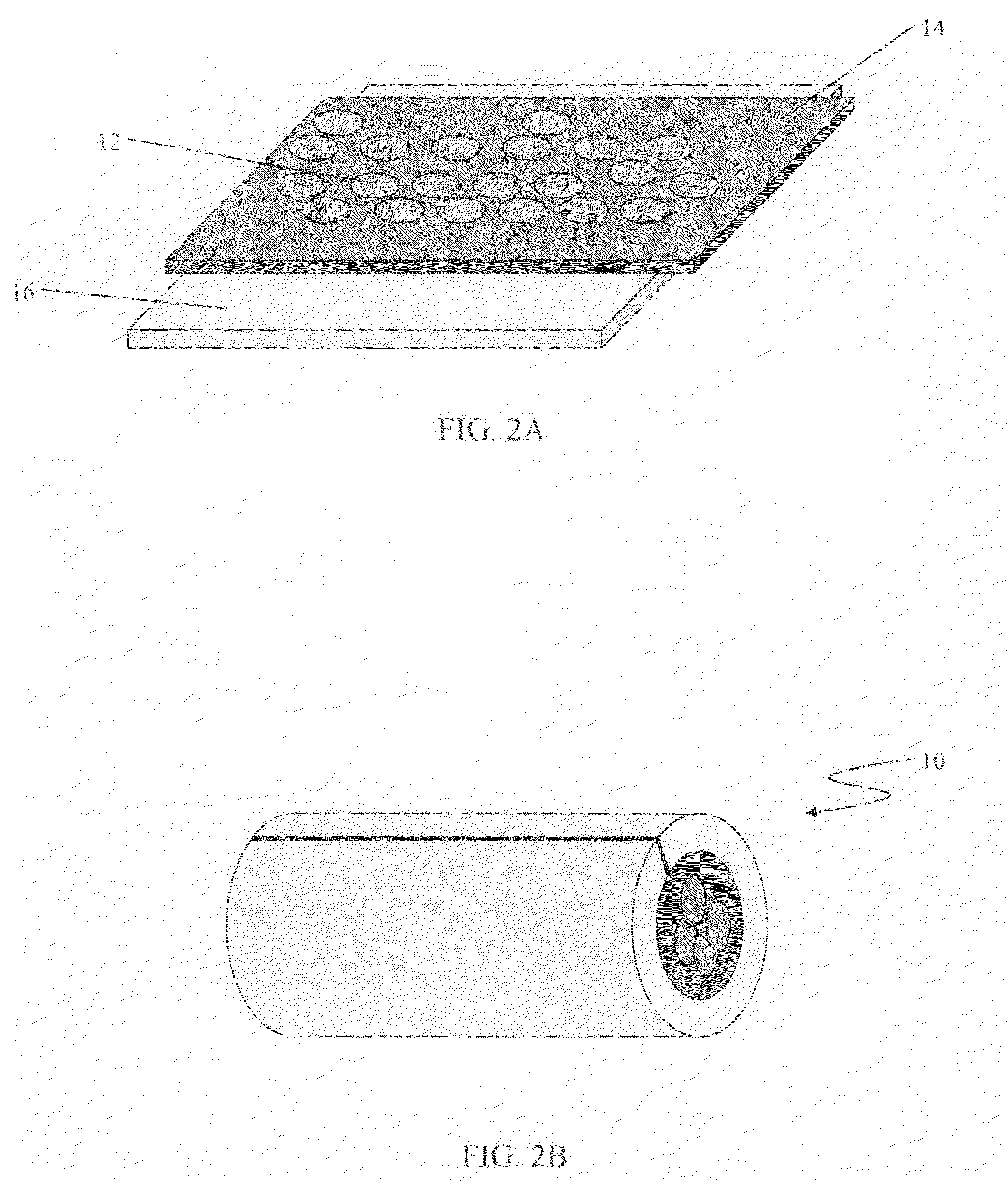Percutaneous delivery system for treatment of osteonecrosis of the hip and methods of use thereof
a technology of percutaneous delivery and hip osteonecrosis, which is applied in the field of percutaneous delivery system for treatment of hip osteonecrosis, can solve the problems of causing the fracture of the proximal femur, causing further collapse of the hip, and causing excessive concentration
- Summary
- Abstract
- Description
- Claims
- Application Information
AI Technical Summary
Benefits of technology
Problems solved by technology
Method used
Image
Examples
example 1
Short-Term Effects of rhBMP / Absorbable Collagen Sponge (ACS) in a Cancellous Bone Environment
[0060]Bilateral cancellous bone defects (8.0 mm diameter×20.0 mm depth, 1 cm3 volume) in distal femurs of 30 adult sheep are created. To study the effect of increasing the overall rhBMP-2 dose or concentration in cancellous bone, rhBMP-2 / ACS implant volume (V) (1V=normal or 2V=overfilled) and concentration (1×=normal or 3.5×=hyperconcentrated) are varied. Control defects are treated with buffer / ACS. Animals are killed at 1, 4, and 8 weeks (4 defects per treatment per time point), and the effects on the specimens are assessed using CT scans and histology.
[0061]At 1 week, the normal-filled, normal-concentration implants demonstrate limited peri-implant osteoclastic activity. Conversely, overfilled or hyperconcentrated rhBMP-2 / ACS implants demonstrate moderate resorption zones with enhanced osteoclastic activity. Implants that are both overfilled and hyperconcentrated demonstrate the most exten...
example 2
[0063]An experiment to study the effect of the addition of a biphasic ceramic bulking agent to the rhBMP-2 / ACS implant is completed. Four cancellous bone defects (8.0 mm diameter×20.0 mm depth, 1 cm3 volume) are created in distal femurs of adult sheep. Equal volumes of the rhBMP-2 / ACS implant and biphasic ceramic granules are mixed together and place into the cancellous defect. The addition of the ceramic granules physically prevents overstuffing of the defect with the mixture, such that only 1V could be added to each defect. The rhBMP-2 / ACS implant is prepared with 4 times the effective concentration (4×), such that the final local concentration within the defect is similar to overfilled defect in the previous experiment (2V at 1×). The effect on the specimens is assessed using CT scans and histology. At 1 week, despite having a local concentration equivalent to the overfilled group tested in the previous example, resorption zones with enhanced osteoclastic activity are not observe...
PUM
 Login to view more
Login to view more Abstract
Description
Claims
Application Information
 Login to view more
Login to view more - R&D Engineer
- R&D Manager
- IP Professional
- Industry Leading Data Capabilities
- Powerful AI technology
- Patent DNA Extraction
Browse by: Latest US Patents, China's latest patents, Technical Efficacy Thesaurus, Application Domain, Technology Topic.
© 2024 PatSnap. All rights reserved.Legal|Privacy policy|Modern Slavery Act Transparency Statement|Sitemap



